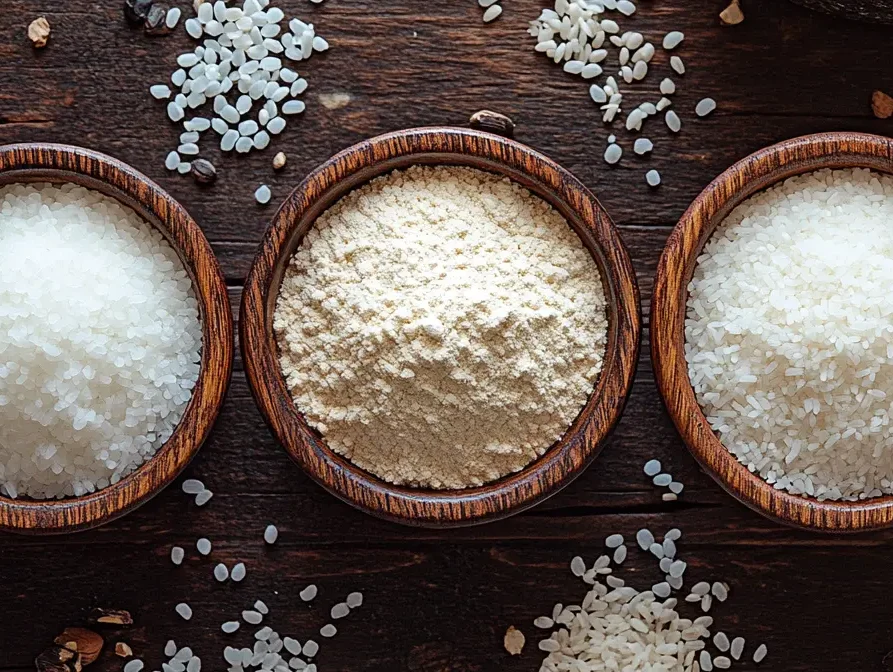
Rice flour is far more than just a gluten-free substitute; it’s a culinary cornerstone that has shaped cuisines across continents. From the delightfully crisp textures of Asian street snacks to the soft, delicate crumbles of homemade baked goods, rice flour offers an unparalleled versatility. It’s a foundational element in countless dishes, celebrated for its unique properties and neutral flavor that allows other ingredients to shine.
This comprehensive guide explores the vast world of rice flour recipes, from beloved global classics to innovative modern favorites. Whether you’re navigating a gluten-free lifestyle in search of reliable gluten-free rice flour recipes, have a penchant for the chewy satisfaction of sweet rice flour desserts, or are simply looking to whip up easy rice flour dishes, this article has something delicious for you. Get ready to unlock the full potential of this humble yet powerful pantry staple.
📖 A Brief History of a Global Staple
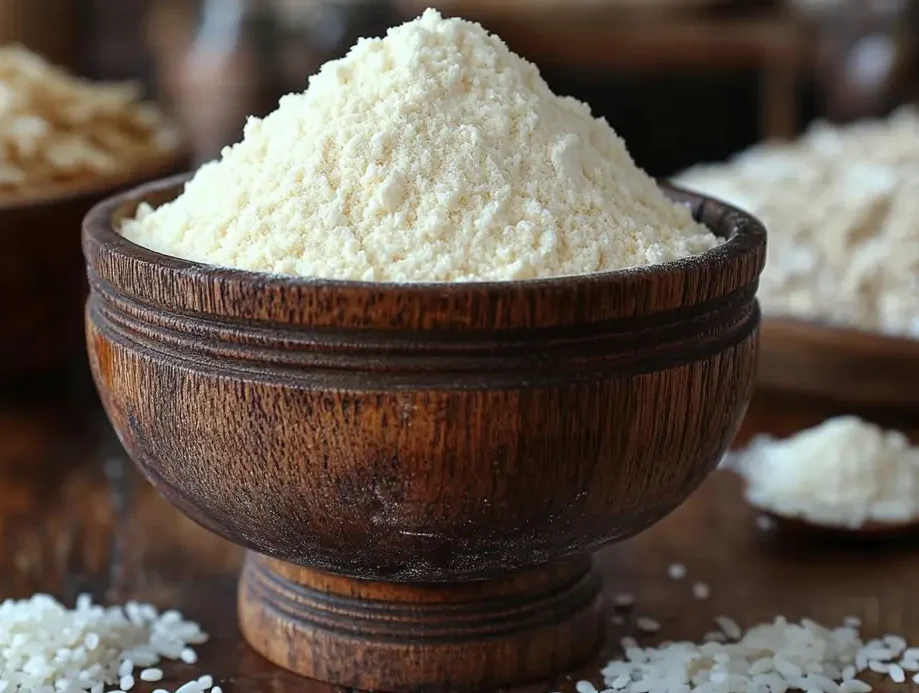
The history of rice flour begins with the cultivation of rice itself thousands of years ago in Asia. As a foundational food crop, the practice of milling rice into a fine powder was a natural culinary evolution. For centuries, rice flour has been a cornerstone of Asian cooking, especially in Japan, China, Korea, and Thailand, forming the base for an incredible array of noodles, dumplings, cakes, and pastries.
Its ability to create textures ranging from soft and chewy to light and crispy made it indispensable. As global trade and migration expanded, rice flour traveled the world, finding a home in Latin American, African, and Indian cuisines. Today, with a growing awareness of gluten sensitivities, rice flour is experiencing a modern renaissance in Western kitchens, solidifying its journey from an ancient grain to a modern pantry hero.
🌾 White vs. Brown vs. Sweet Rice Flour: What’s the Difference?
Before cooking, it’s crucial to understand that not all rice flours are created equal, as the type you choose will dramatically impact your dish’s texture.
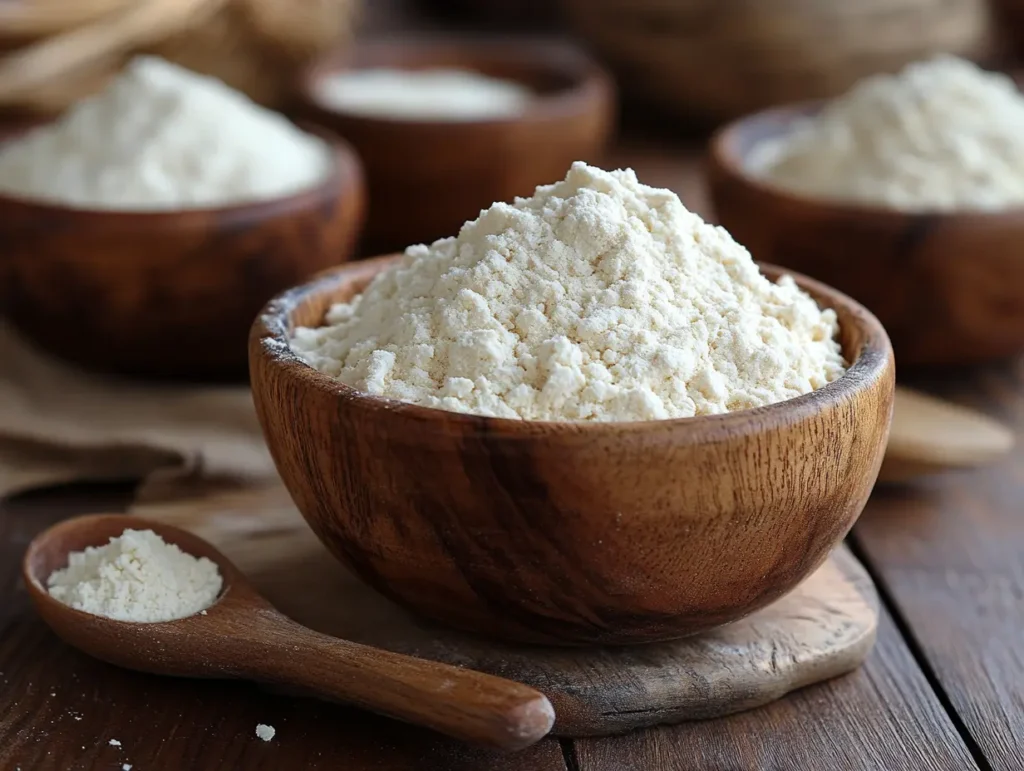
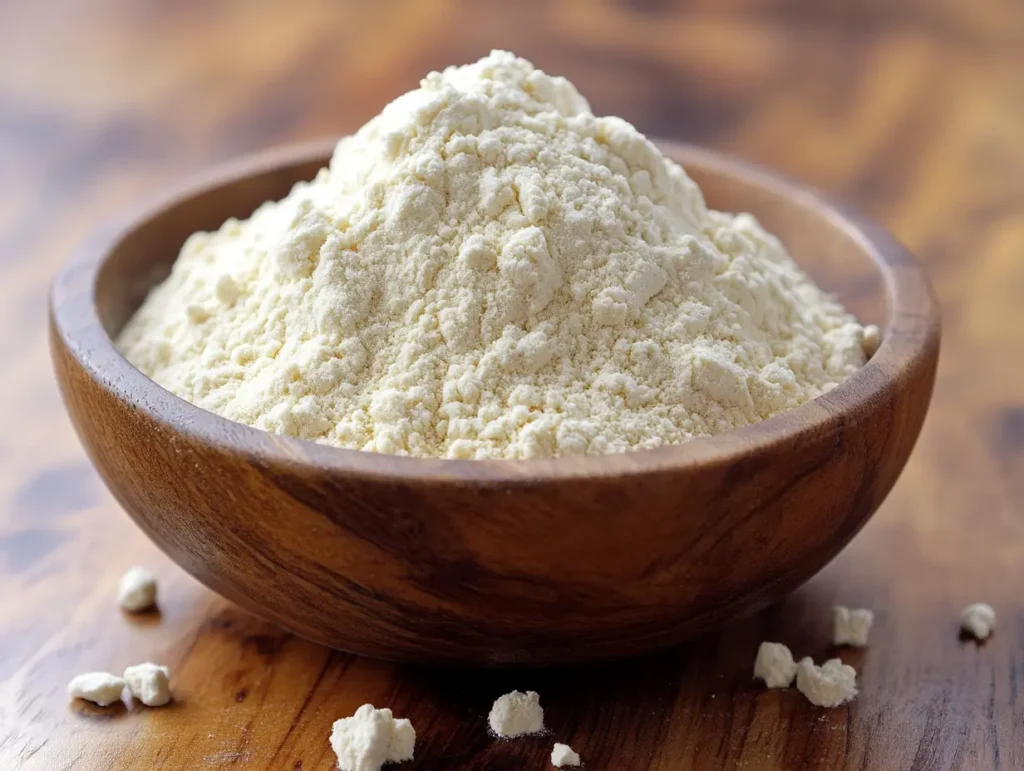
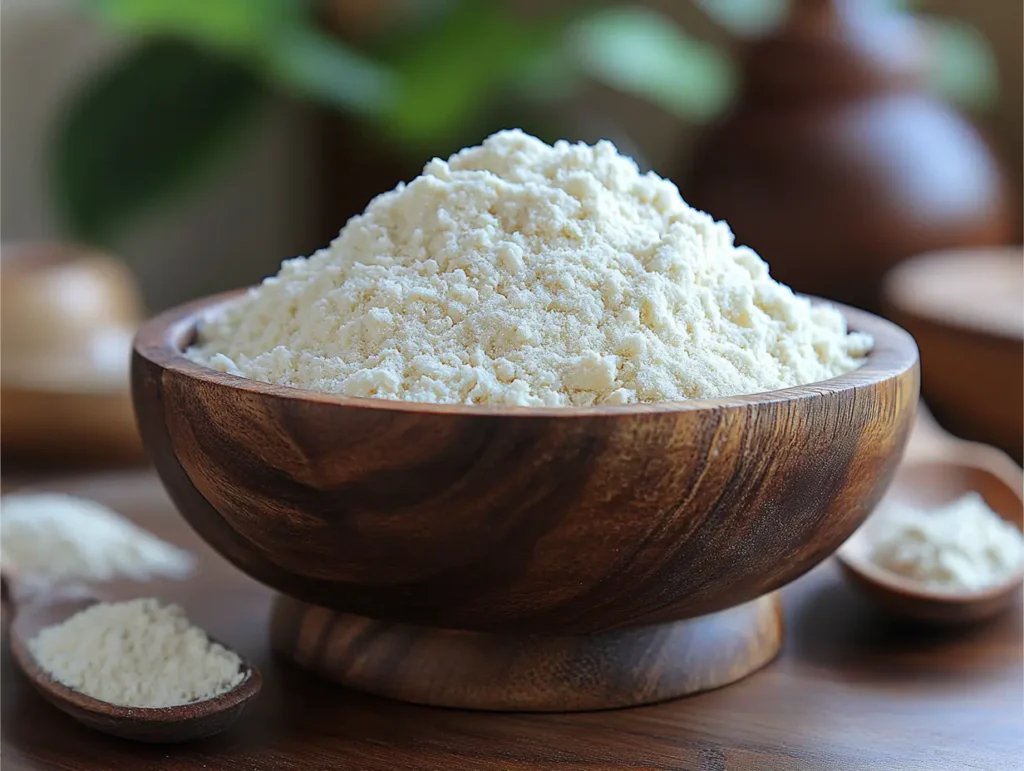
- White Rice Flour: Milled from polished white rice, this common variety is fine, light, and neutral in flavor. It’s excellent for creating light batters, delicate cakes, and crispy coatings.
- Brown Rice Flour: Made from whole-grain brown rice, this flour retains the bran and germ, giving it a nuttier flavor, denser texture, and higher nutritional value. It’s great for heartier baked goods like breads and muffins.
- Sweet Rice Flour (Mochiko): Despite its name, this flour isn’t sweet and is gluten-free. It’s milled from high-starch “sticky” rice, which gives it a signature chewy, elastic texture when cooked. It is the essential ingredient for Japanese mochi and other Asian desserts.
This table breaks down their characteristics and best uses:
| Feature | White Rice Flour | Brown Rice Flour | Sweet Rice Flour (Mochiko) |
|---|---|---|---|
| Source | Polished white rice | Whole-grain brown rice | High-starch short-grain rice |
| Flavor | Neutral, very mild | Slightly nutty, earthy | Neutral, mild |
| Texture | Fine, light, slightly gritty | Denser, more fibrous | Fine, starchy, sticky when cooked |
| Best For | Pancakes, light batters, tempura, shortbread, thickening sauces | Breads, muffins, cookies, noodles, hearty baked goods | Mochi, dumplings, tang yuan, chewy brownies, gluten-free flour blends |
| Gluten-Free? | Yes | Yes | Yes |
🌏 Global Classics Using Rice Flour
Let’s take a culinary tour to explore traditional recipes where rice flour is the star, showcasing the ingredient’s incredible diversity.
🇯🇵 Japanese Mochi
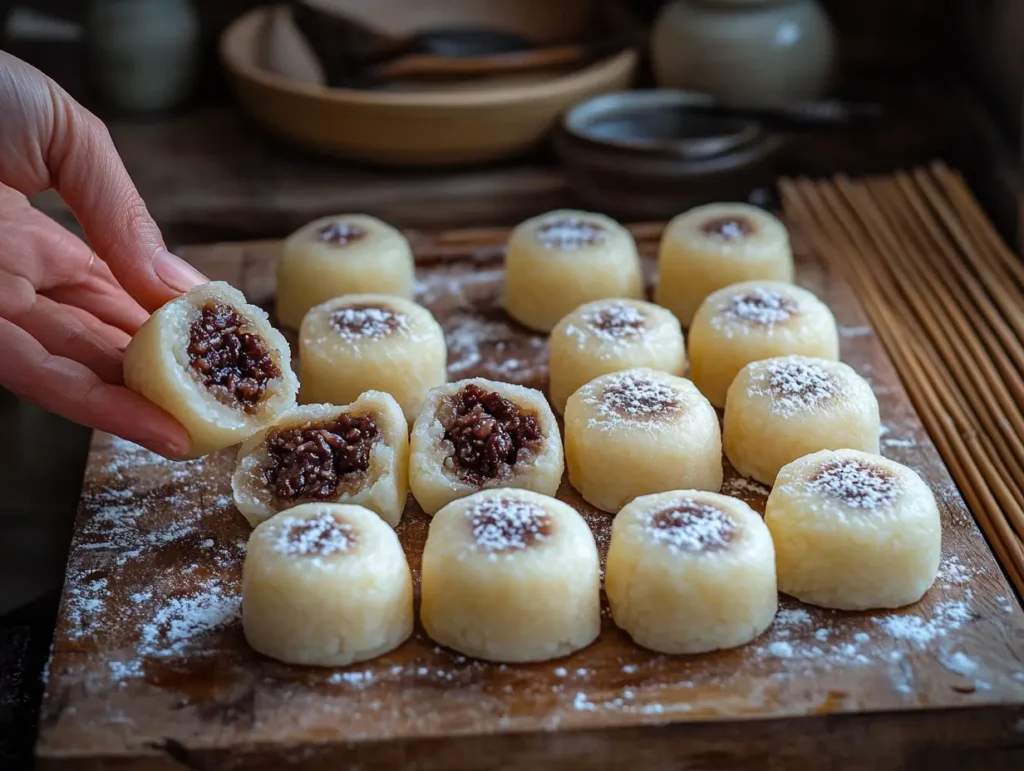
Mochi is a beloved Japanese rice cake known for its uniquely soft and chewy texture. It’s made with sweet rice flour (mochiko) and can be enjoyed plain or with fillings like red bean paste or fresh fruit. For a truly authentic experience, consider using a kit for making sushi at home to round out a Japanese-themed meal.
Ingredients


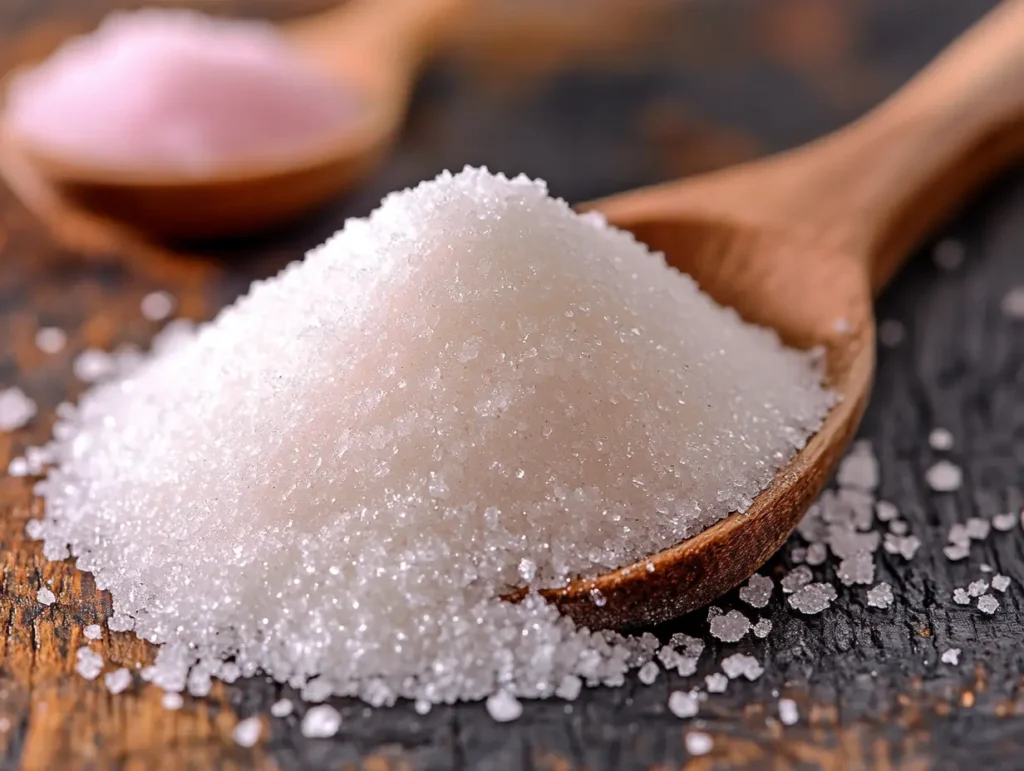
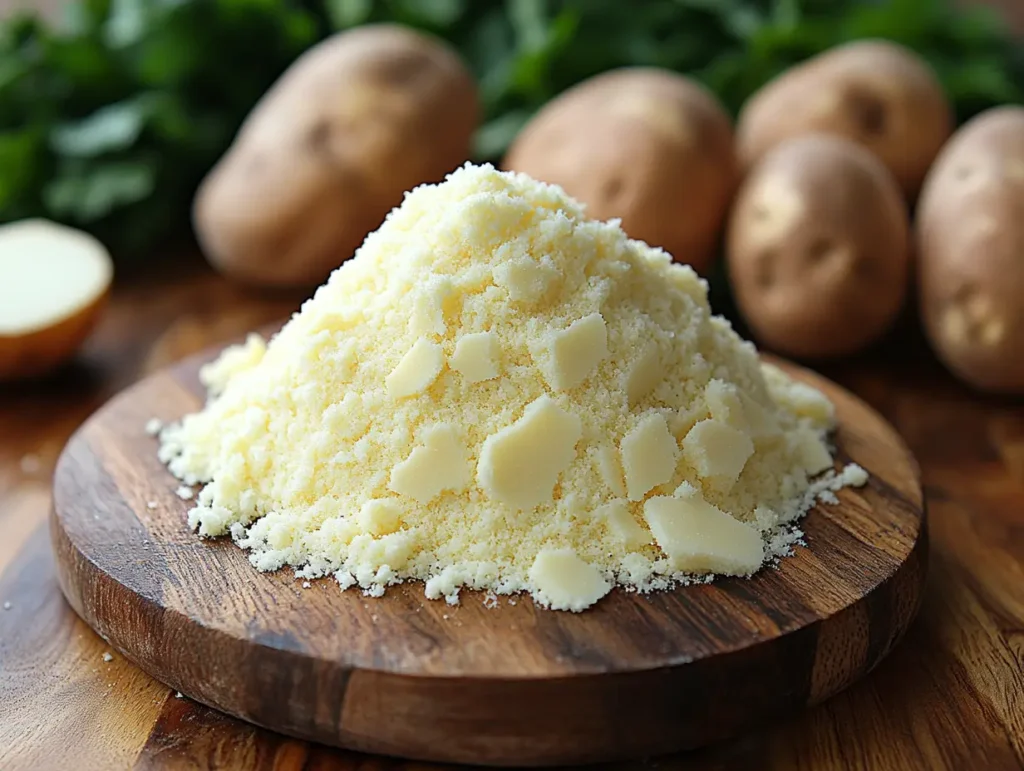
- 1 cup (160g) sweet rice flour (mochiko)
- ¾ cup (180ml) water
- ¼ cup (50g) granulated sugar
- Potato starch or cornstarch, for dusting
- Optional fillings: Red bean paste (anko), fresh strawberries
Instructions
- Combine: In a microwave-safe bowl, whisk together the sweet rice flour and sugar. Gradually pour in the water, whisking to create a smooth batter.
- Microwave: Cover the bowl loosely and microwave on high for 1 minute. Remove and stir with a wet spatula.
- Continue Cooking: Cover and microwave for another minute, then stir vigorously. The dough should be thick and sticky.
- Final Cook: Microwave for a final 30 seconds until the dough is semi-translucent and glossy.
- Shape: Scrape the hot mochi dough onto a work surface generously dusted with potato starch. Dust the top of the mochi and your hands, then flatten the dough.
- Fill and Cut: Cut the sheet into small squares or wrap pieces around a filling, pinching the edges to seal.
🇰🇷 Korean Tteok (Rice Cakes)
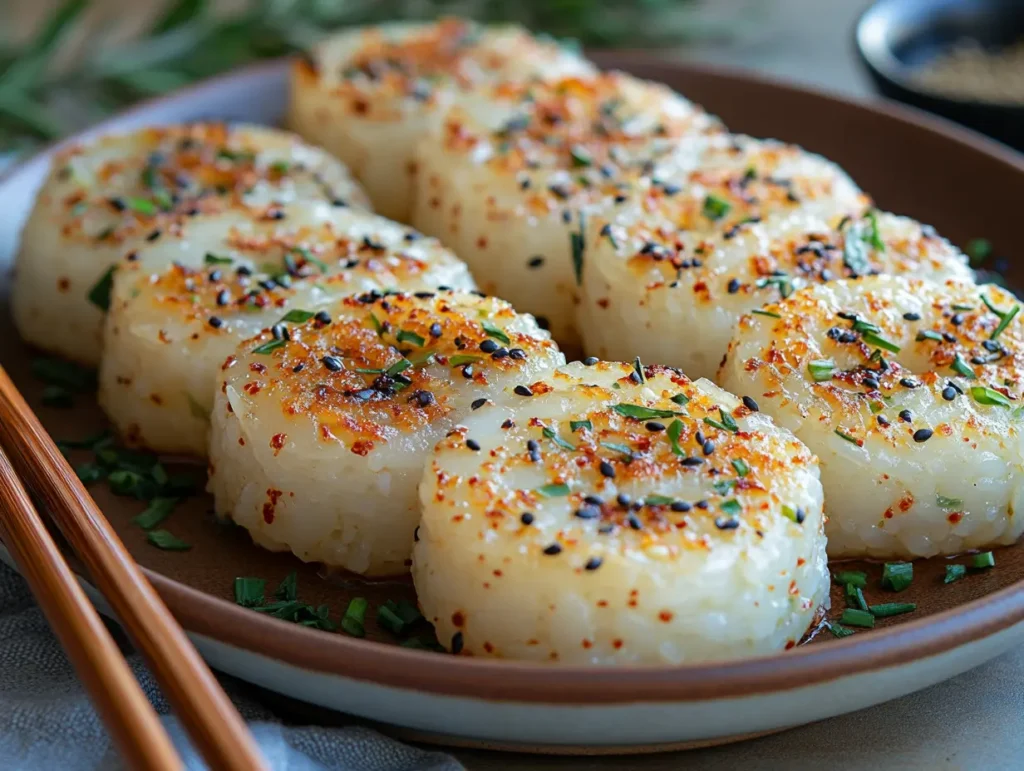
Tteok refers to a wide category of Korean rice cakes made from steamed rice flour. They are a staple of Korean cuisine, from savory dishes to sweet desserts. Common variants include Garaetteok (cylindrical cakes for the spicy dish tteokbokki) and Injeolmi (sweet tteok coated in roasted soybean powder). For best results, use a steamer lined with a damp cloth and serve them fresh and warm.
🇳🇬 Nigerian Tuwo Shinkafa
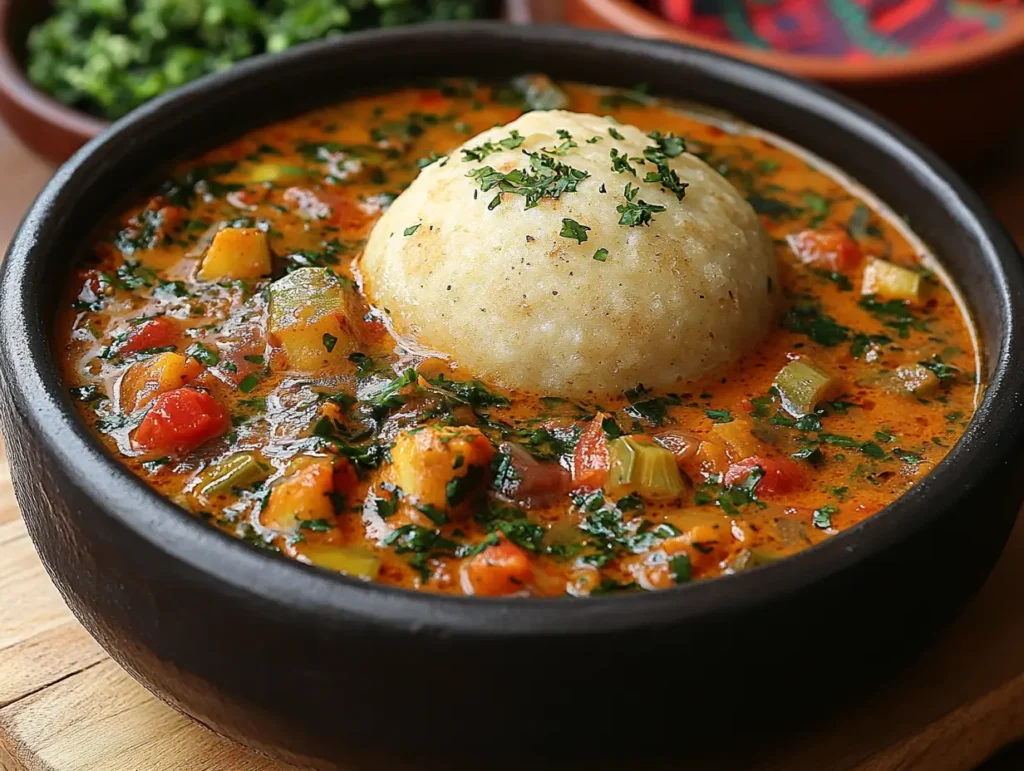
Tuwo Shinkafa is a soft rice fufu from northern Nigeria, translating to “rice meal.” It’s made by cooking rice flour into a thick, smooth dough and is traditionally eaten with flavorful soups and stews. This comforting dish is a wonderful staple, much like other global comfort foods such as Finnish salmon soup.
Ingredients



- 1 cup rice flour
- 2-3 cups water
- Pinch of salt (optional)
Instructions
- Make Slurry: In a bowl, mix the rice flour with 1 cup of cool water to form a smooth, lump-free paste.
- Combine: Bring 1.5 cups of water to a boil in a pot. Slowly pour the slurry into the boiling water, whisking vigorously.
- Cook: Reduce heat and continue stirring with a wooden spoon for 10-15 minutes. The mixture will thicken until it pulls away from the sides of the pot.
- Serve: Scoop the tuwo into a bowl, shape it into a ball, and serve warm with traditional stews.
🥞 Easy Rice Flour Recipes for Everyday Cooking
Rice flour is perfect for whipping up quick and easy meals any day of the week.
Crispy and Tender Rice Flour Pancakes
These gluten-free pancakes have uniquely crispy edges and a soft, tender inside.
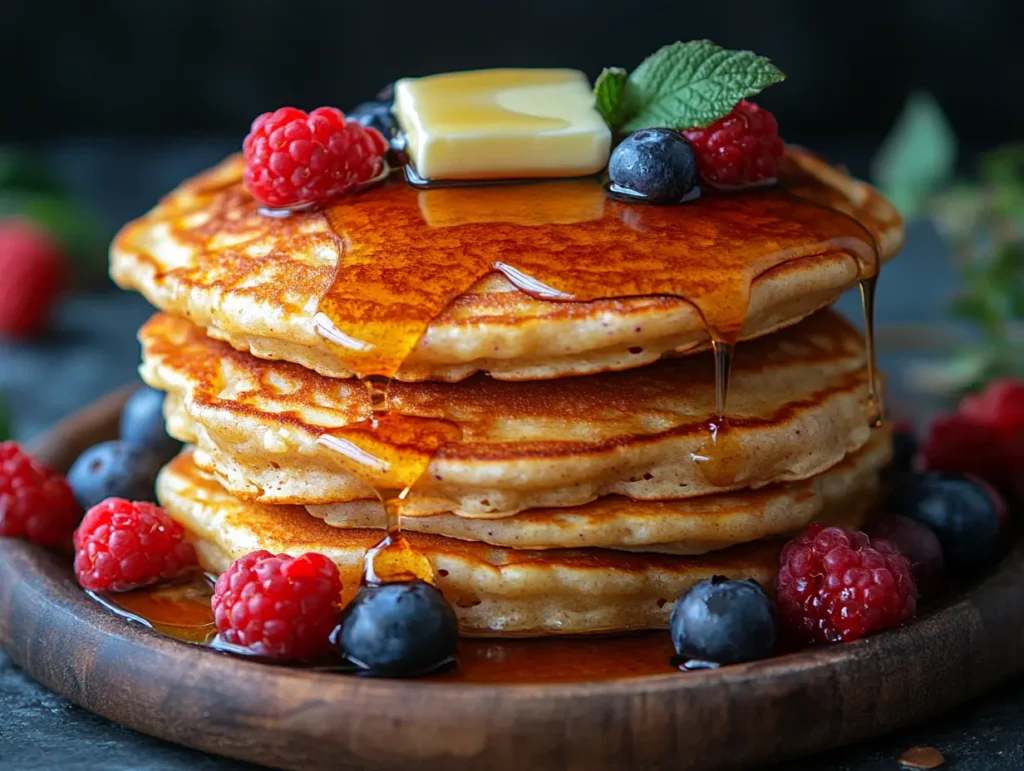
Ingredients


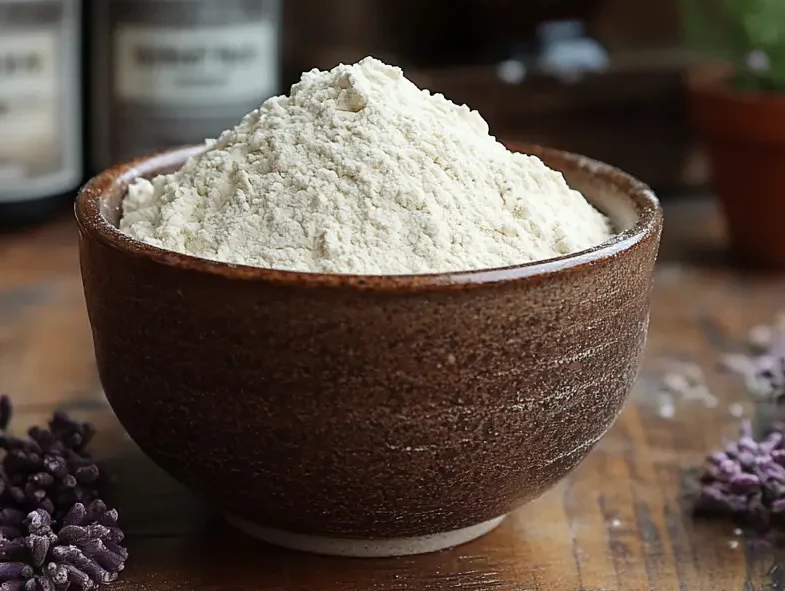

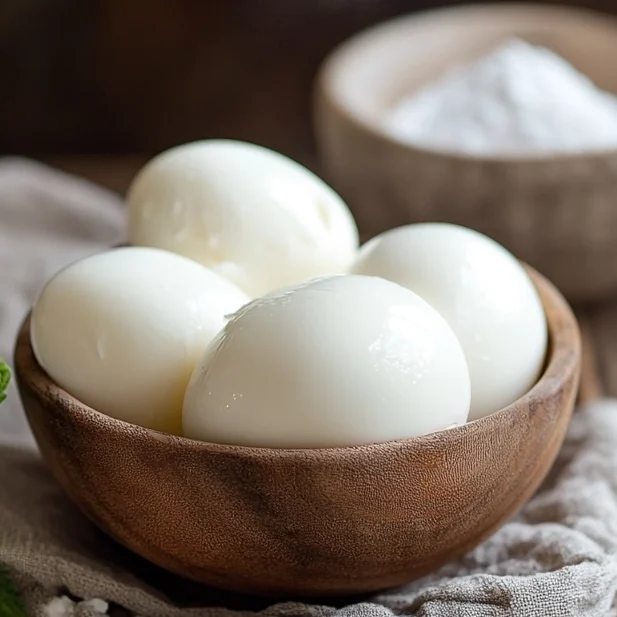
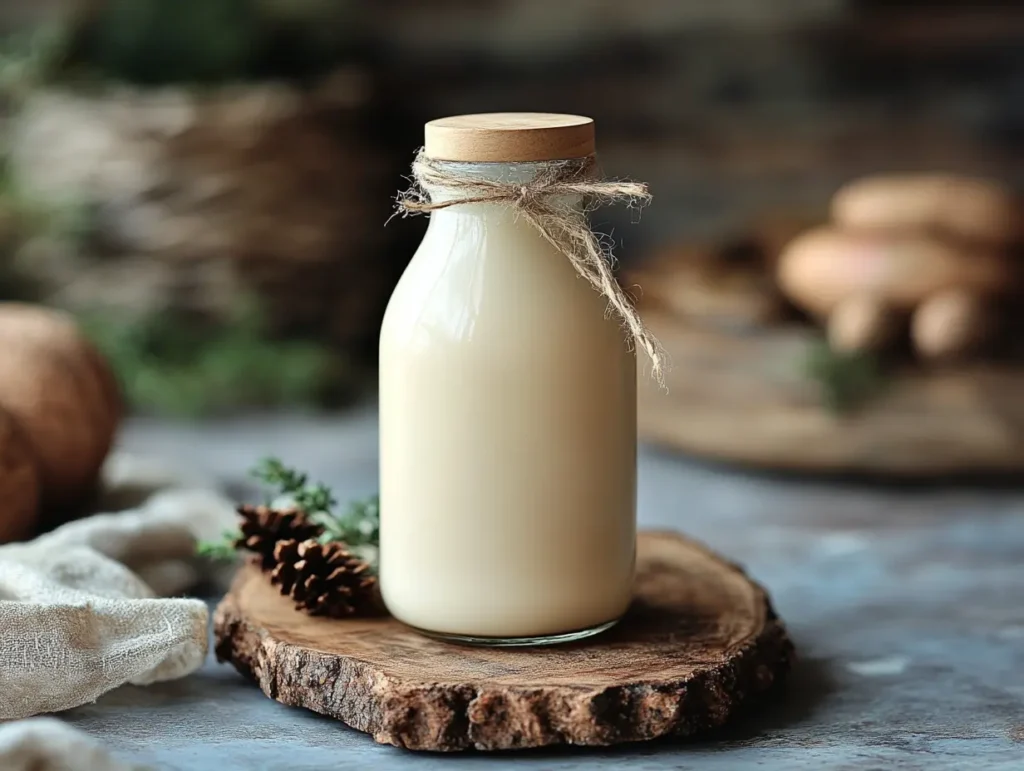
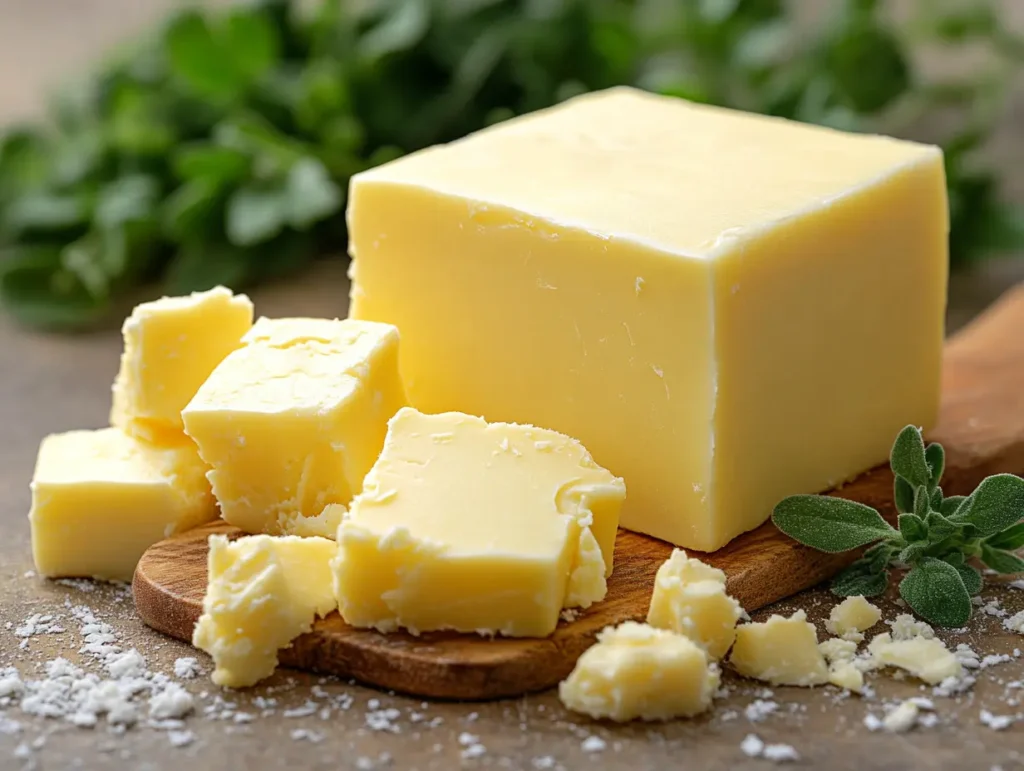
- 1 cup white rice flour
- 1 tablespoon granulated sugar
- 2 teaspoons baking powder
- ¼ teaspoon salt
- 1 large egg
- ¾ cup milk (or a plant-based alternative)
- 2 tablespoons melted unsalted butter or neutral oil
Instructions
- Mix Dry Ingredients: In a large bowl, whisk together the rice flour, sugar, baking powder, and salt.
- Combine Wet and Dry: In a separate bowl, whisk the egg, milk, and melted butter. Pour the wet mixture into the dry ingredients and mix until just combined. Let the batter rest for 5 minutes.
- Cook: Heat a lightly greased non-stick skillet over medium heat. Pour ¼ cup of batter for each pancake. Cook for 2-3 minutes per side until golden brown.
- Serve: Serve immediately with your favorite toppings.
Savory Rice Flour Crepes (Cheela)
A popular and healthy snack from South Asia, cheela are thin, savory rice flour pancakes.
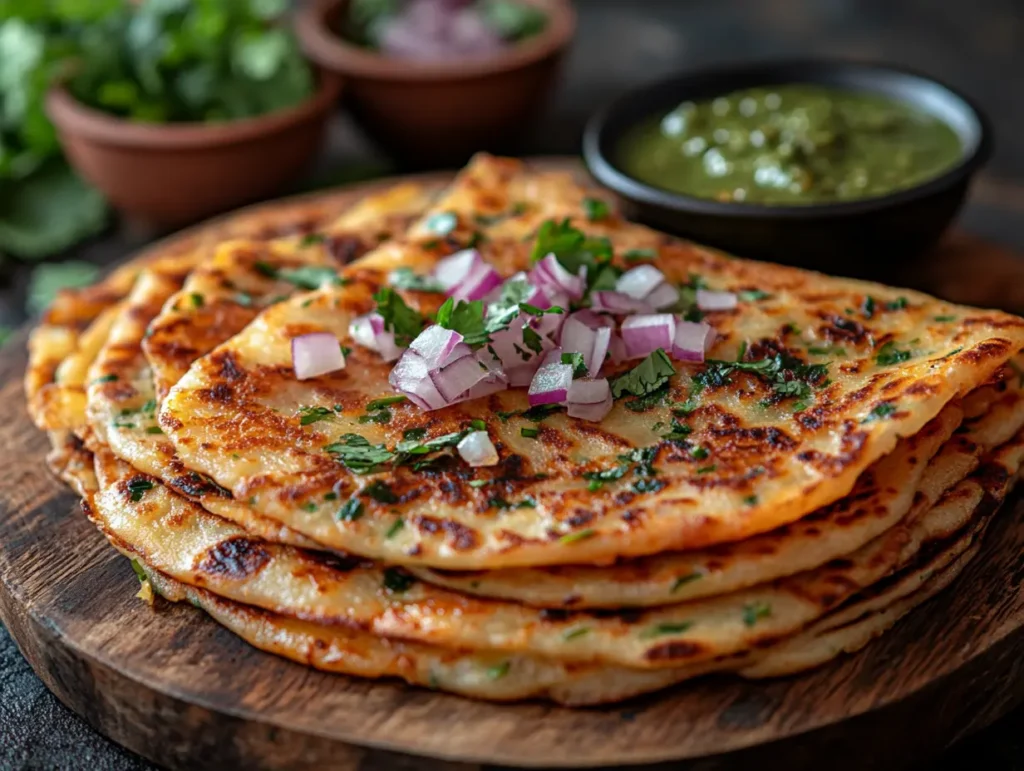
Ingredients
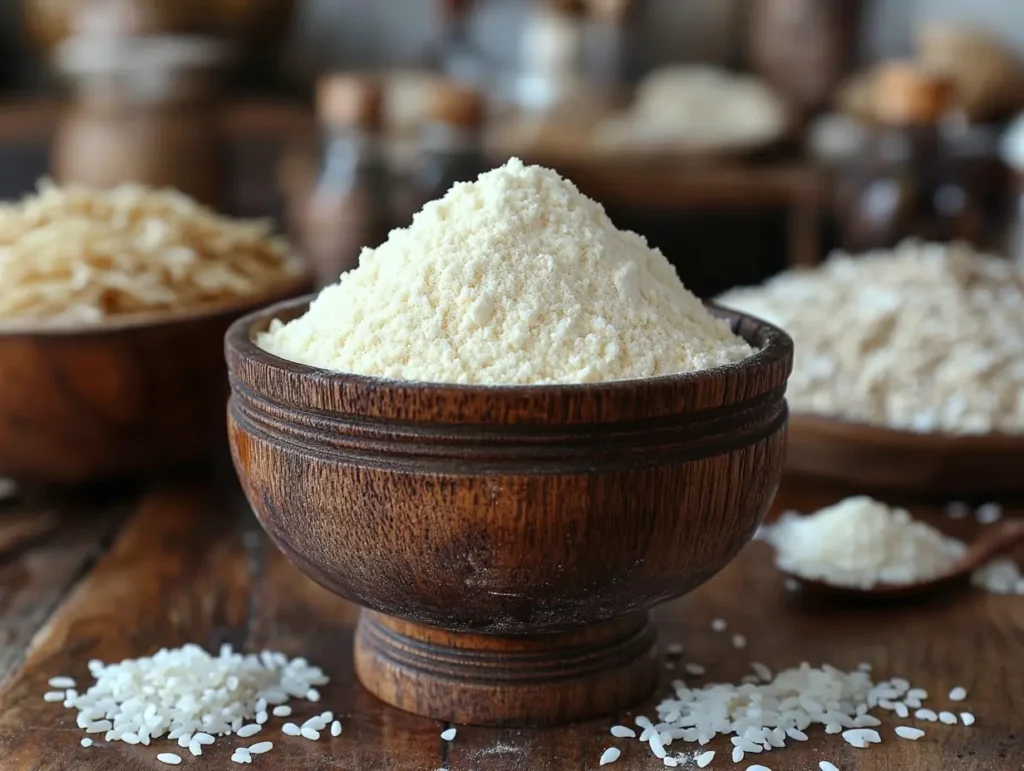
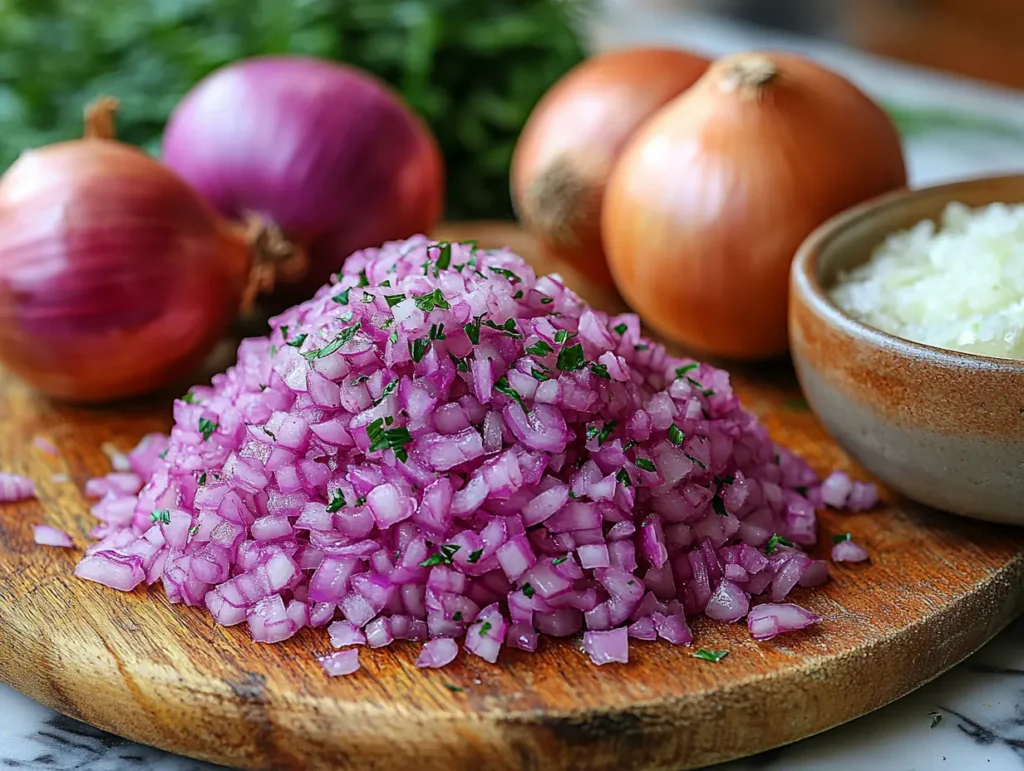
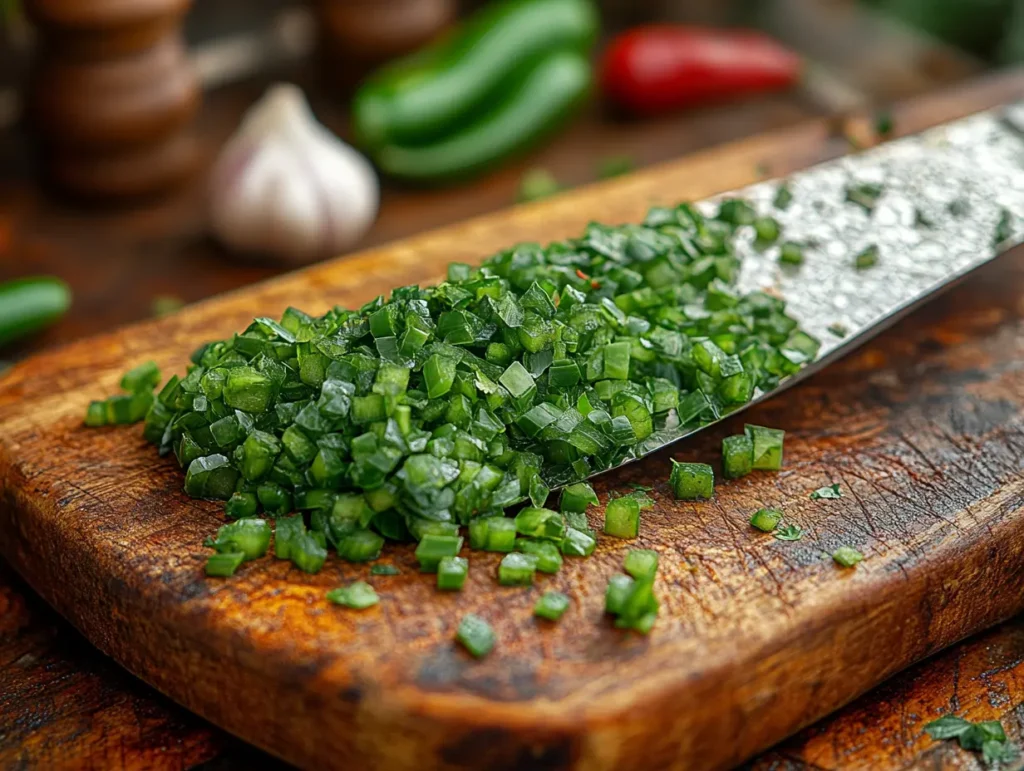

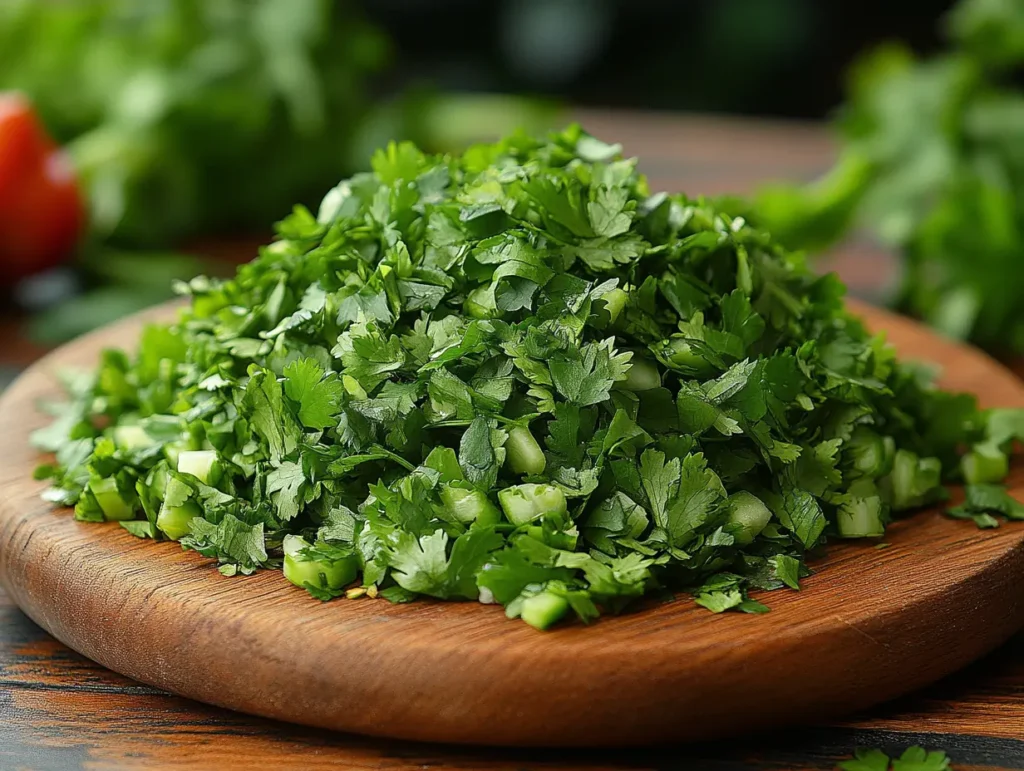
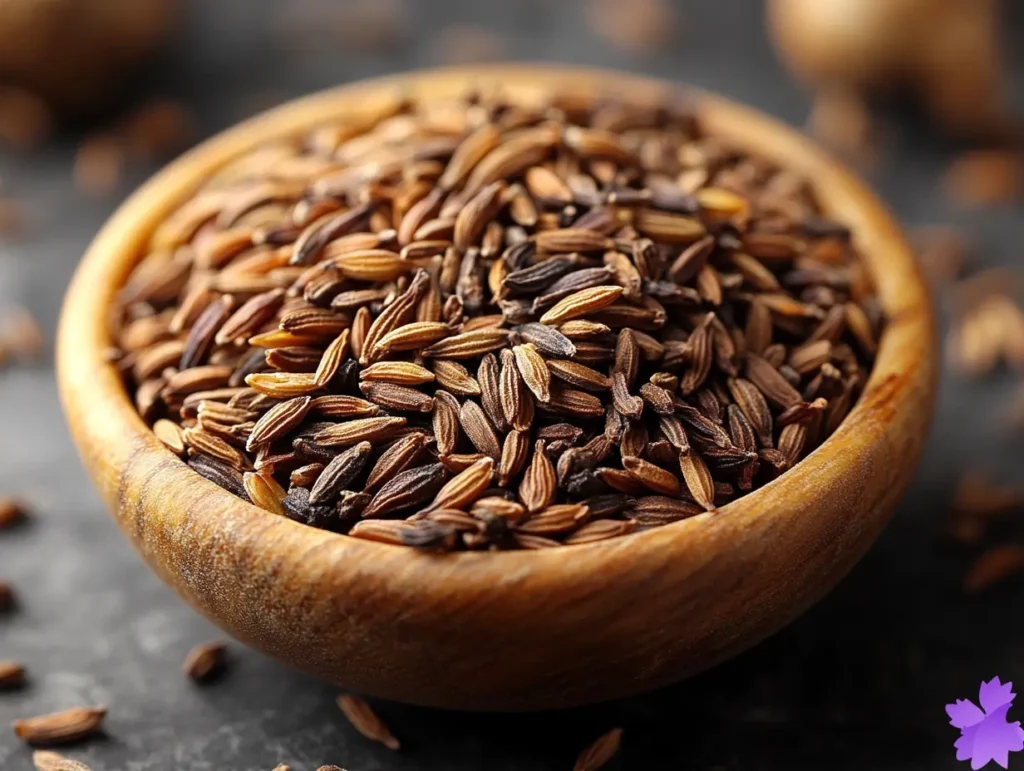
- 1 cup rice flour
- ¼ cup finely chopped red onion
- 1 green chili, finely chopped
- 2 tablespoons chopped fresh cilantro
- ½ teaspoon cumin seeds
- ½ teaspoon salt
- 1 ½ cups water (adjusted for consistency)
Instructions
- Prepare Batter: In a bowl, combine all dry ingredients. Gradually whisk in the water to form a thin, pourable batter.
- Cook Crepes: Heat an oiled non-stick skillet over medium-high heat. Pour a ladleful of batter onto the skillet, swirling to spread it thin.
- Crisp and Flip: Cook for 2-3 minutes until the bottom is golden and the edges are crispy. Flip and cook the other side for another minute. Serve hot with chutney or a yogurt dip. For another savory meal idea, consider these ground beef crock pot recipes.
⭐ Pro Tips for Cooking and Baking with Rice Flour
Working with rice flour is different from using wheat flour. Follow these tips for the best results.
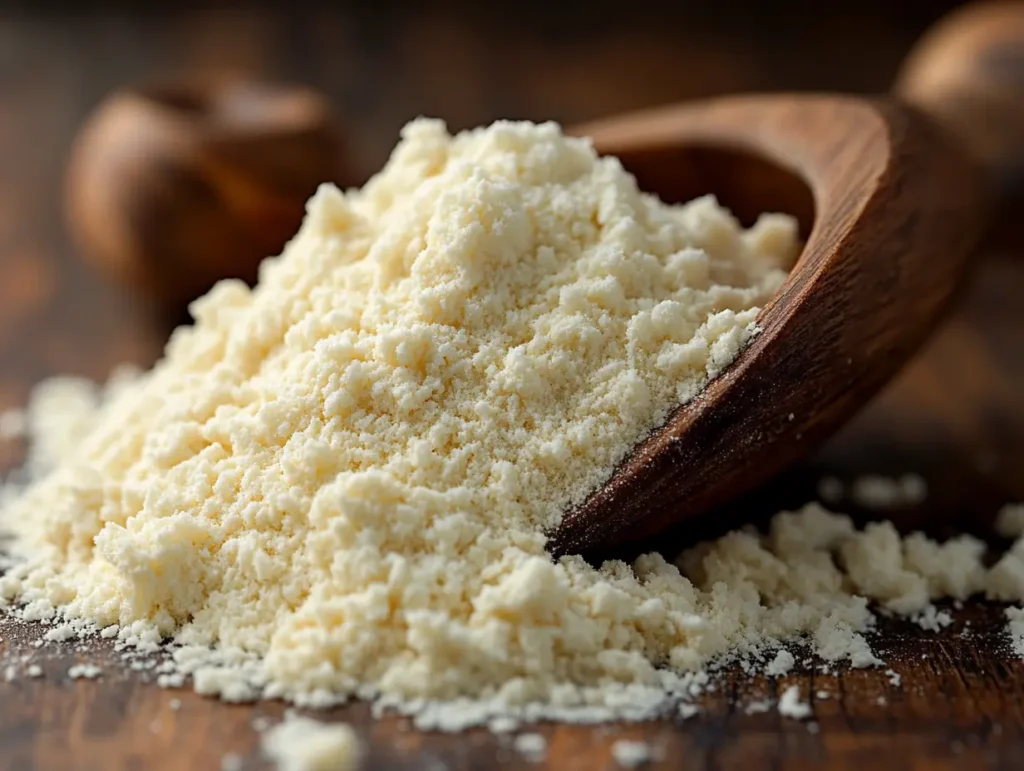
- Avoid Grittiness: Use “superfine” or “finely milled” rice flour. Allowing batters and doughs to rest for 10-30 minutes before cooking lets the flour fully hydrate, resulting in a smoother texture.
- Hydration is Key: Rice flour is very absorbent and often requires more liquid than all-purpose flour. Add extra water, milk, or oil if your mixture feels too dry.
- Blend for Structure: For baked goods like cakes, rice flour works best when blended with other gluten-free flours and starches (like potato or tapioca starch) to mimic the structure of gluten. For a healthier bake, you could try one of these nutritious weekend bake ideas.
- Restraint in Mixing: Only mix batters until the ingredients are just combined. Since there’s no gluten to develop, this helps keep baked goods light and tender.
- Embrace the Chew: When using sweet rice flour (mochiko), remember its purpose is to create a chewy, elastic texture. It’s not a direct substitute for other rice flours in most recipes.
❓ Frequently Asked Questions (FAQ)
1. Is rice flour healthier than all-purpose wheat flour?
Brown rice flour is more nutritious than white all-purpose flour, offering more fiber and nutrients. The primary health benefit of all rice flour is that it’s naturally gluten-free, making it essential for individuals with celiac disease or gluten intolerance. For those exploring this lifestyle, a comprehensive guide to gluten-free living can be very helpful.
2. Can I make my own rice flour at home?
Yes, with a powerful blender or grain mill. Simply blend uncooked rice on the highest setting until it becomes a fine powder. Sift it to remove any larger pieces for the best texture.
3. Why are my rice flour baked goods dry and crumbly?
This is a common issue caused by a lack of moisture or a binder. Increase the fat or liquid in your recipe, and consider adding a binder like an extra egg or xanthan gum (about ½ tsp per cup of flour) to improve the texture.
4. What is the best way to store rice flour?
Store rice flour in a sealed, airtight container in a cool, dark place. Brown rice flour contains natural oils and is best stored in the refrigerator or freezer to maintain freshness.
5. Can I use rice flour as a 1:1 substitute for all-purpose flour?
This is not recommended for most baking, as rice flour behaves differently without gluten. It works well for pancakes or as a coating, but for cakes and breads, you should use recipes specifically developed for rice flour or a balanced gluten-free blend. There are many fantastic vegan and gluten-free recipes designed for success.
🌟 Ready to Embrace the Versatility of Rice Flour?
Whether you’re new to the world of gluten-free cooking or a seasoned culinary adventurer, rice flour is an indispensable ingredient that deserves a permanent spot in your pantry. Its remarkable ability to adapt to a vast spectrum of culinary applications—from sweet to savory, crispy to chewy, and traditional to modern—makes it one of the most useful flours available.
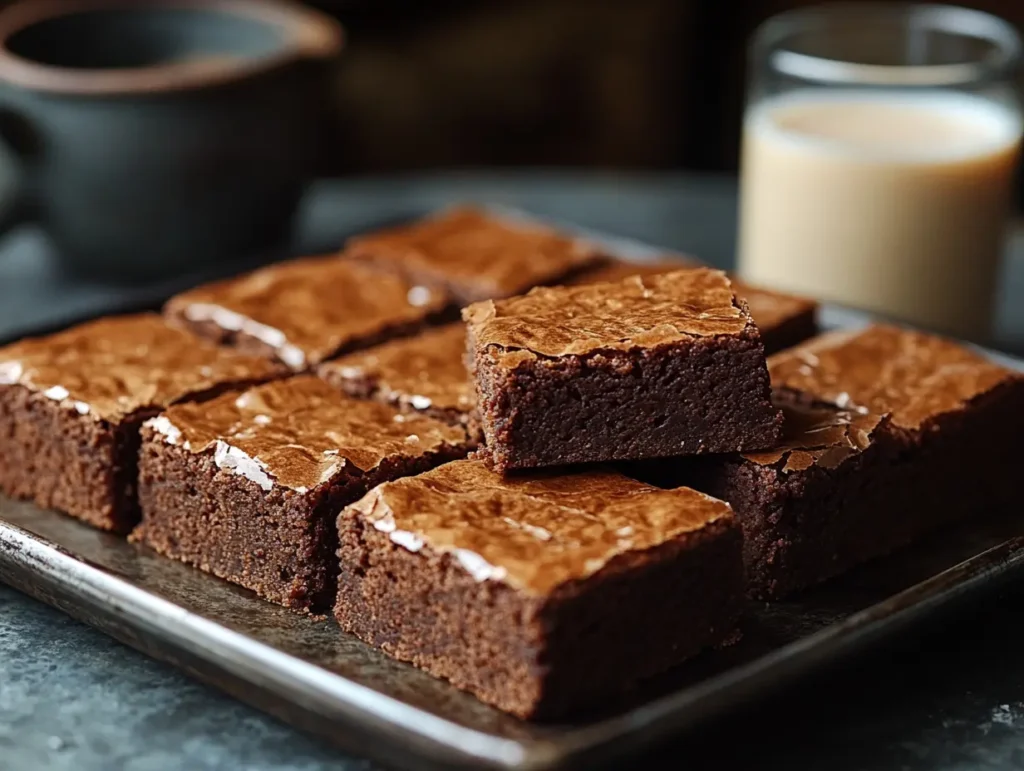
We’ve journeyed from the soft, chewy delights of Japanese mochi to the hearty comfort of Nigerian Tuwo Shinkafa, and from simple weekday pancakes to delightful savory crepes. This exploration only scratches the surface of what’s possible. The true magic happens when you bring this ingredient into your own kitchen and start experimenting. Use it to create a crispy coating for baked chicken, thicken a savory stew, or surprise your family with a batch of chewy mochi brownies. After your delicious meal, you might even want to try some easy healthy desserts to round things out. So go ahead—grab that bag of rice flour, and let your creativity take flight. Happy cooking!
📋 Quick Recipe Guide
Print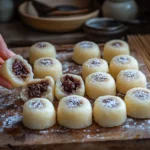
Japanese Mochi (Gluten-Free Rice Cake)
- Total Time: 8 minutes
- Yield: 8 pieces 1x
- Diet: Gluten Free
Description
This classic Japanese mochi recipe uses sweet rice flour (mochiko) to create soft, chewy rice cakes. It’s simple to prepare and can be enjoyed plain or filled with red bean paste or fresh fruit.
Ingredients
- 1 cup (160g) sweet rice flour (mochiko)
- ¾ cup (180ml) water
- ¼ cup (50g) granulated sugar
- Potato starch or cornstarch, for dusting
- Optional: Red bean paste (anko), fresh strawberries
Instructions
- In a microwave-safe bowl, whisk sweet rice flour and sugar. Gradually add water, whisking to create a smooth batter.
- Cover loosely and microwave on high for 1 minute. Remove and stir with a wet spatula.
- Microwave for another minute, stir vigorously, then microwave a final 30 seconds until dough is semi-translucent and glossy.
- Transfer hot dough to a surface dusted with potato starch. Dust hands and dough, flatten, and cut into squares or wrap around fillings, pinching to seal.
- Serve immediately or store in an airtight container.
Notes
Always use sweet rice flour (mochiko) for authentic chewy texture.
Dusting with starch prevents sticking during shaping.
- Prep Time: 5 minutes
- Cook Time: 3 minutes
- Category: Dessert
- Method: Microwave
- Cuisine: Japanese
Nutrition
- Serving Size: 1 piece
- Calories: 90
- Sugar: 6 g
- Sodium: 5 mg
- Fat: 0 g
- Saturated Fat: 0 g
- Unsaturated Fat: 0 g
- Trans Fat: 0 g
- Carbohydrates: 22 g
- Fiber: 0 g
- Protein: 1 g
- Cholesterol: 0 mg
Keywords: mochi, Japanese dessert, sweet rice flour, gluten-free, chewy rice cake

